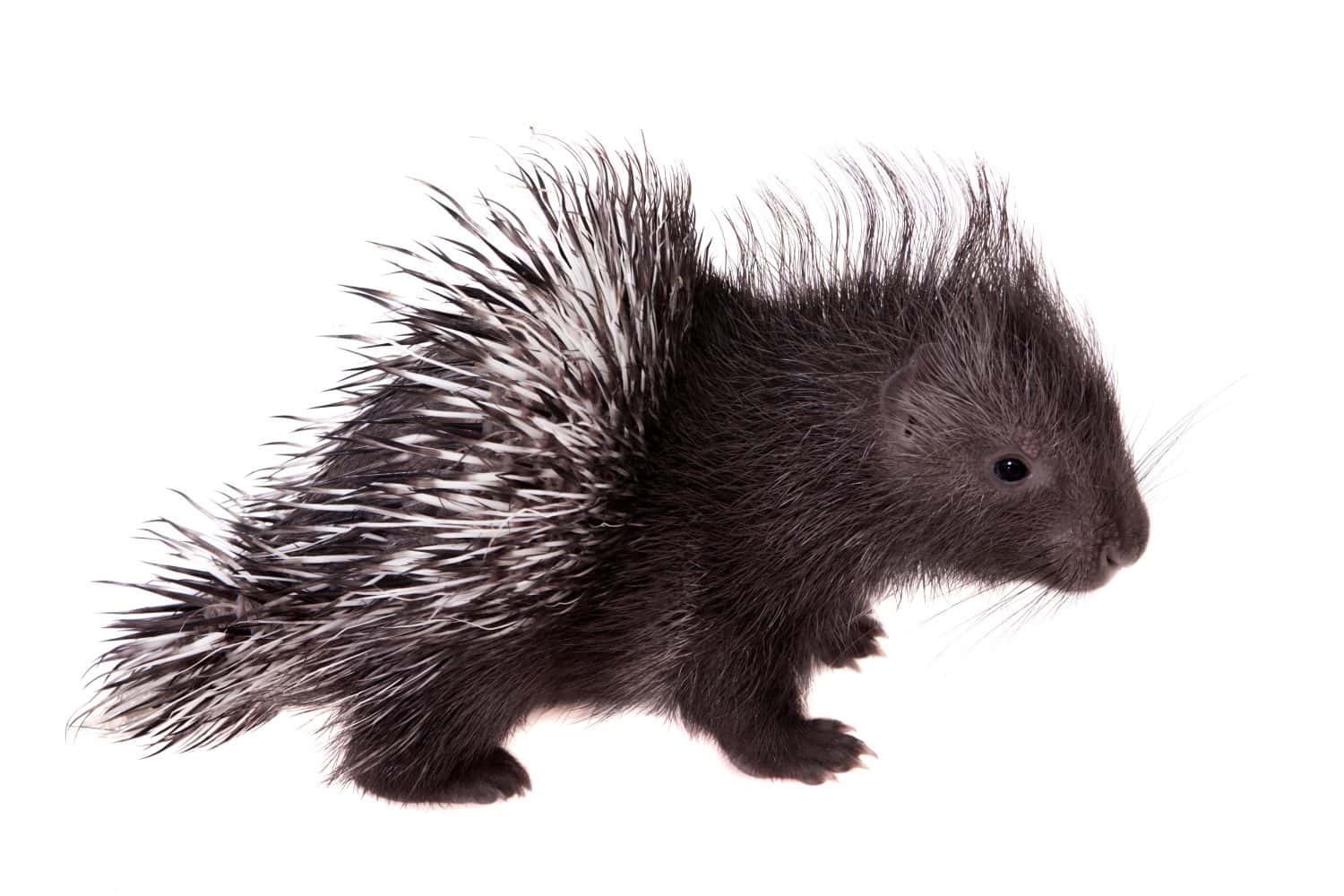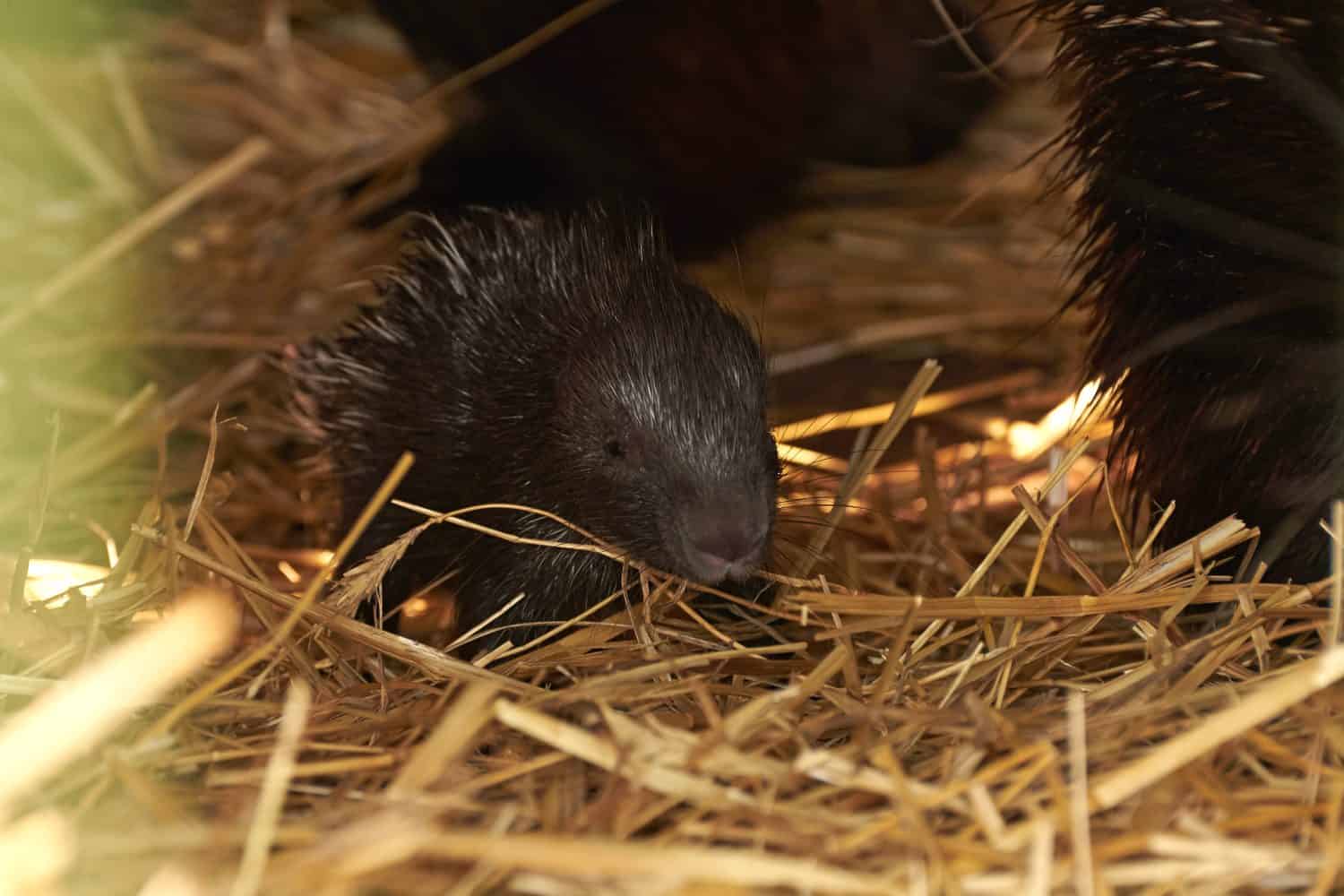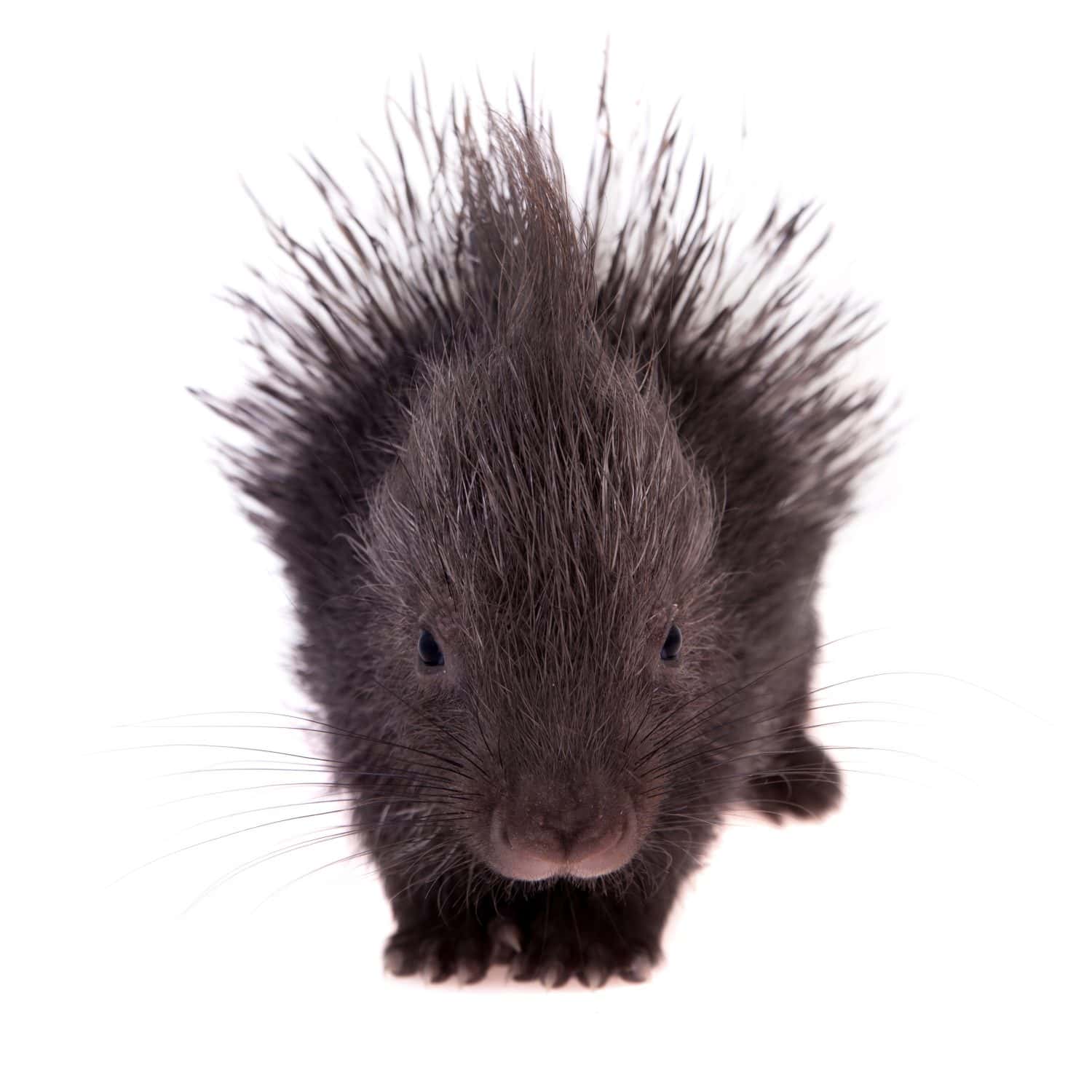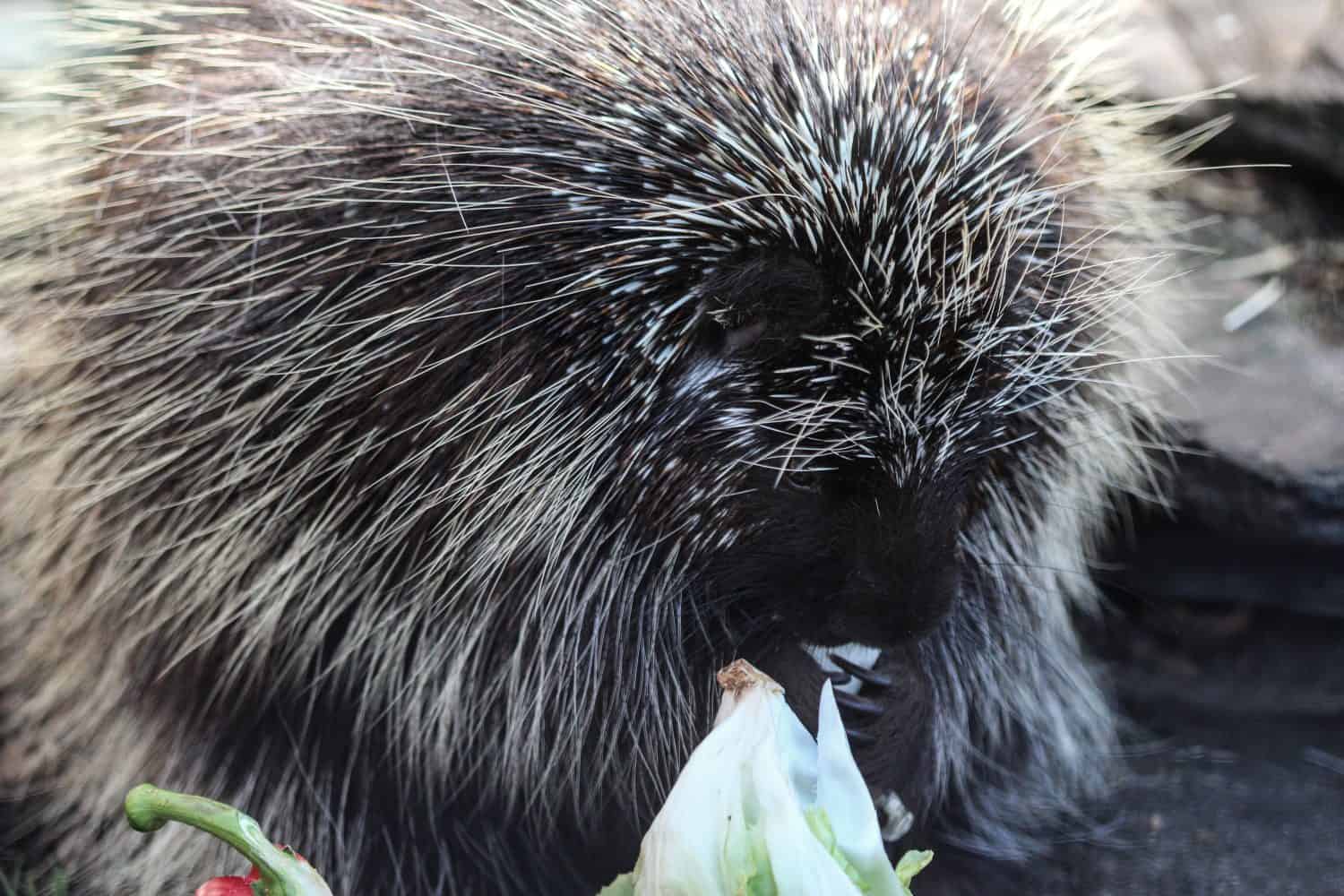Zoos are constantly announcing the birth of baby animals, especially porcupines. Take for instance the London Zoo birth announcement about, Hector and Hinata, two of the cutest cape porcupines you’ll ever see. Starting life off at less than a pound, these adorable babies can grow up to be pretty huge. Cape species are one of the bigger types of porcupines and can weigh over 30 pounds.
What else should you know about these quilled mammals? In this article, we’ll be looking at some of the cutest, coolest, and weirdest baby porcupine facts. So take a look at your daily dose of cute, as you learn all about porcupettes.
1. Baby Porcupines Are Often Only Children

It’s common for baby porcupines to be an only child.
©Rosa Jay/Shutterstock.com
Baby porcupines know what it’s like to be an only child. After a seven-month gestation period, porcupine moms usually give birth between April and June. Sometimes a mother will have as many as four young, but it’s not uncommon for there to be only one baby.
Babies usually forage for green vegetation at 2 weeks, and only occasionally nurses. Then they rely on their mother’s milk until they wean fully. By 6 months old the baby is independent and reaches sexual maturity around one and a half years. These self-reliant creatures can live as long as 10-18 years in the wild.
2. Their Quills Are Soft

A baby porcupine has soft quills that begin to harden within minutes.
©Dmytro Sirenko/Shutterstock.com
Baby porcupines are born with a full set of soft bendable quills. They’re about as long as an adult, but they don’t have any prickliness to them. A newborn baby porcupine’s quills are super soft and hidden by hair. After a few minutes they begin to harden and stand up, but they won’t be prickly for a few days. Made of keratin, the quills have sharp barbed points at their end. They attach to the baby’s skin with thin sheaths or tissue layers.
Baby porcupines are born with quills because they’re a precocial species. Similar to a precocial horse or a duck, porcupines start life out with a headstart. They’re born with a lot of the things they need to survive and forage for food. They have quills, fur, developed teeth, and the ability to move around.
3. Baby Porcupines Grow Up to Love Salt

By the wintertime, many porcupines may begin craving salt.
©Holly Kuchera/Shutterstock.com
Baby porcupines may grow up to have a love for a popular seasoning—salt! That’s why these mammals love chewing on things soaked in human sweat. Boat oars, outhouses, ax handles; if it’s sweaty salty, a porcupine will chew on it.
When there isn’t anything sweaty around, they’ll find salt in the mud, by gnawing on antlers, and by chewing on the bones of animal carcasses. Moose and snowshoe hares have a similar situation and can be found on roadsides looking for leftover salt in the snow.
As herbivores, porcupines have a strictly vegetarian diet. During the spring and summer, porcupines mainly eat green plants, like wildflowers, which tend to be low in sodium and high in potassium. So by the time winter carries, they’re in dire need of some salt.
4. Baby Porcupines Have an Arch-Nemesis

Baby porcupines have to watch out for sneaky predators like the fisher, who looks like a big mink.
©Rosa Jay/Shutterstock.com
Belonging to the weasel family, the fisher is the porcupine’s worst enemy. Adults and babies have to watch out for this sneaky predator. They’re one of the only mammals that love taking on the quilled challenge porcupines present.
The fisher, being an experienced hunter, knows to start by attacking the porcupine’s face. After injuring the porcupine it’ll start attacking the underbelly and neck. Along with fishers, porcupines can also fall prey to wolves, owls, bobcats, lynx, and coyotes.
5. They Can Be an Old World or New World Species

Baby New World porcupines have quills spread out through their soft hair and fur.
©Mr. Meijer/Shutterstock.com
Baby porcupines fall into one of two groups; Old World vs. New World. Old-World porcupines can’t climb trees. They’re more stocky and have coats and clusters of flattened quills. Their quills are unbarbed, but still plenty sharp. Primarily found in Europe, Asia, and Africa, Old-World porcupines eat bark, leaves, flowers, twigs, and more. As omnivores, they’ll also eat carrion (animal carcasses) they come across.
New World porcupines have single quills, spread out through their soft hair and fur. Sometimes they spend their time in the trees, other times they prefer a more terrestrial lifestyle. They live throughout North and South America. For instance, the North American porcupine likes hanging out in the forests. It’s here you’ll find them munching on clovers, flowers, twigs, fruits, and more.
6. Babys Are Called Porcupettes

A baby porcupine is called a porqupette.
©Anan Kaewkhammul/Shutterstock.com
Baby porcupines are called porcupettes. At birth, porcupettes are covered in a small caul, or sac to protect the mother. After birth, it can take half a year to tell if the baby is a boy or a girl. One of the best ways to tell the sex of a porcupine is by looking at its size. These animals are sexually dimorphic, which means males tend to be bigger than females. Depending on the species males grow up to weigh 20-25 pounds or more, while females usually top out around 18 to 20 pounds.
The photo featured at the top of this post is © Rosa Jay/Shutterstock.com
Thank you for reading! Have some feedback for us? Contact the AZ Animals editorial team.






